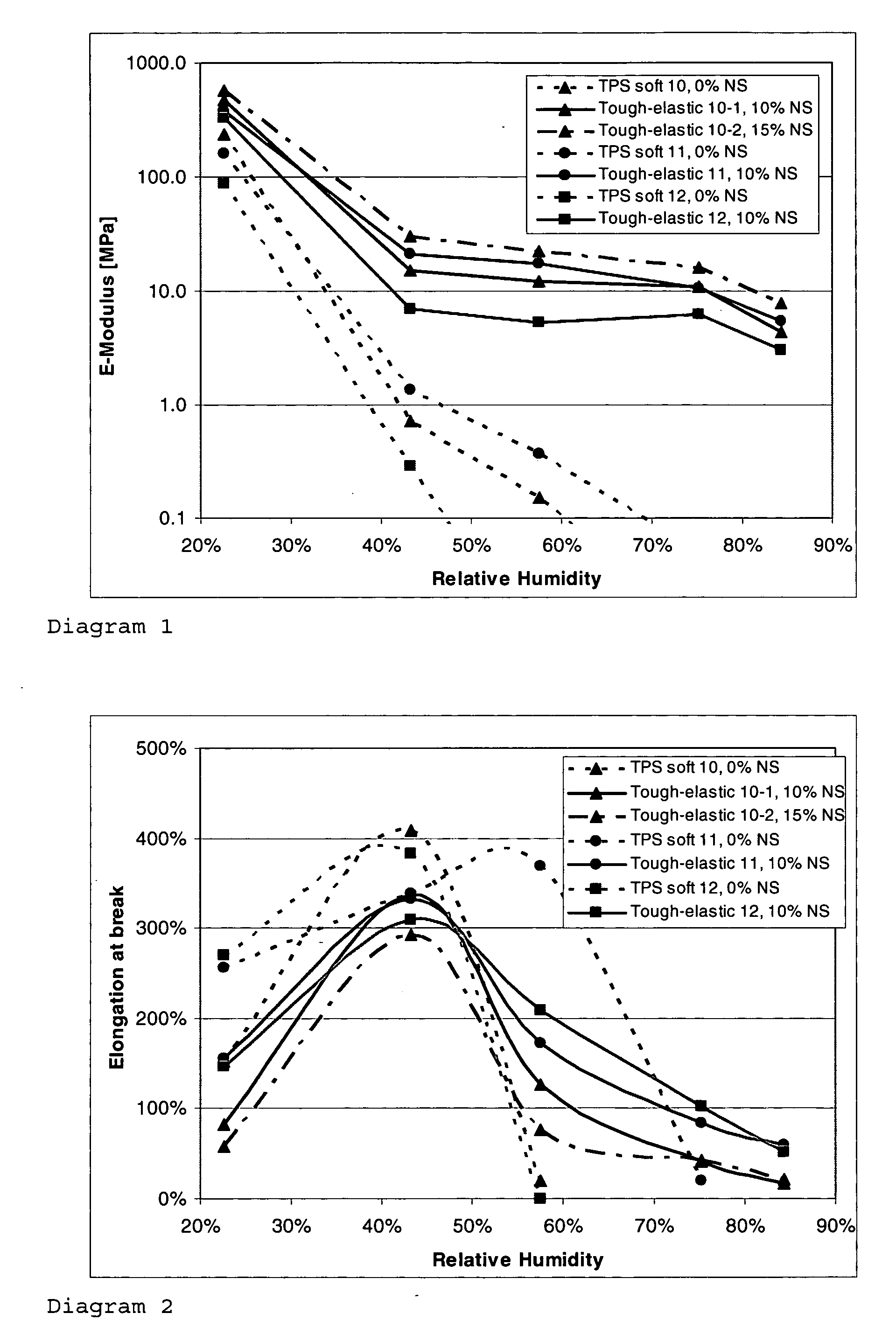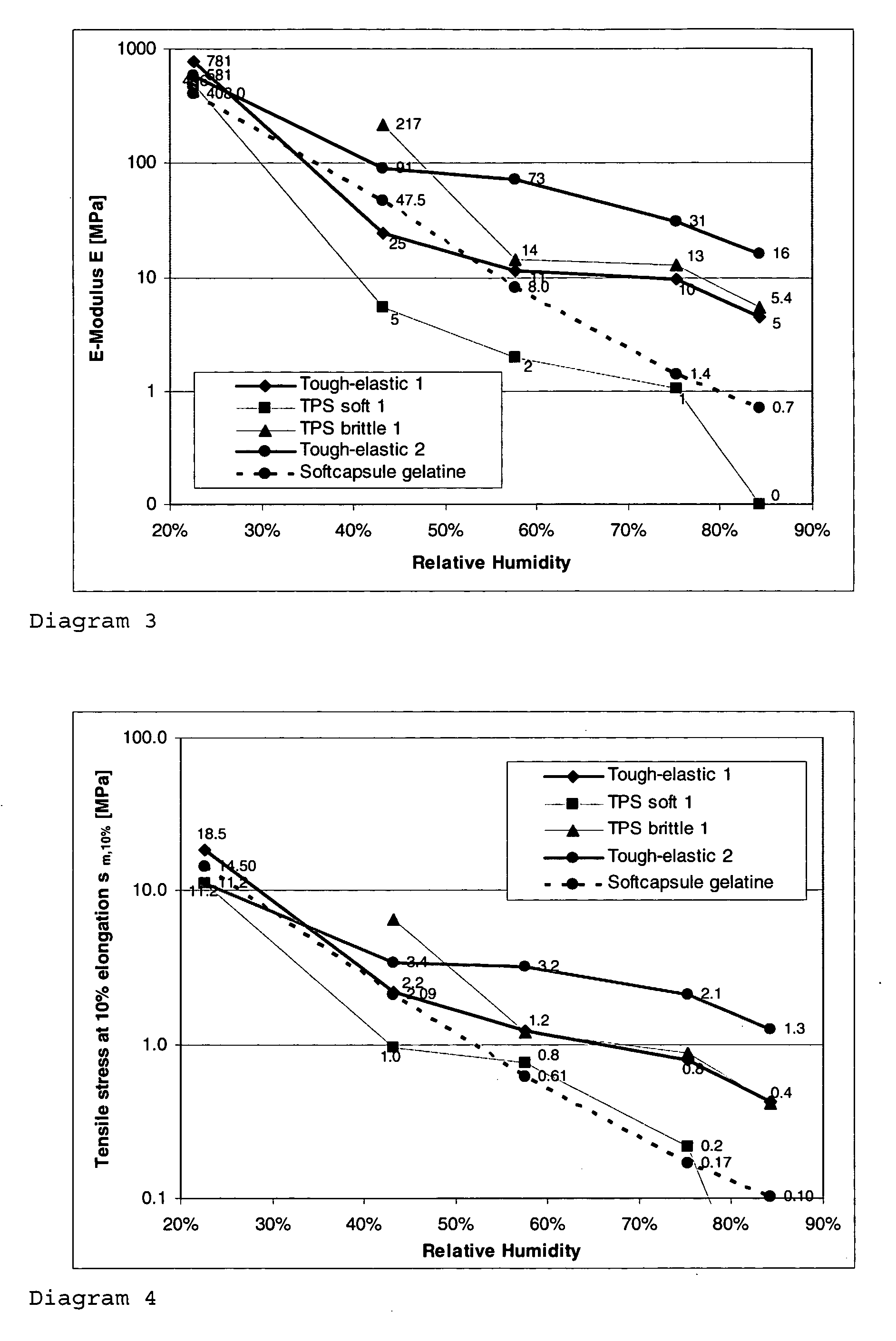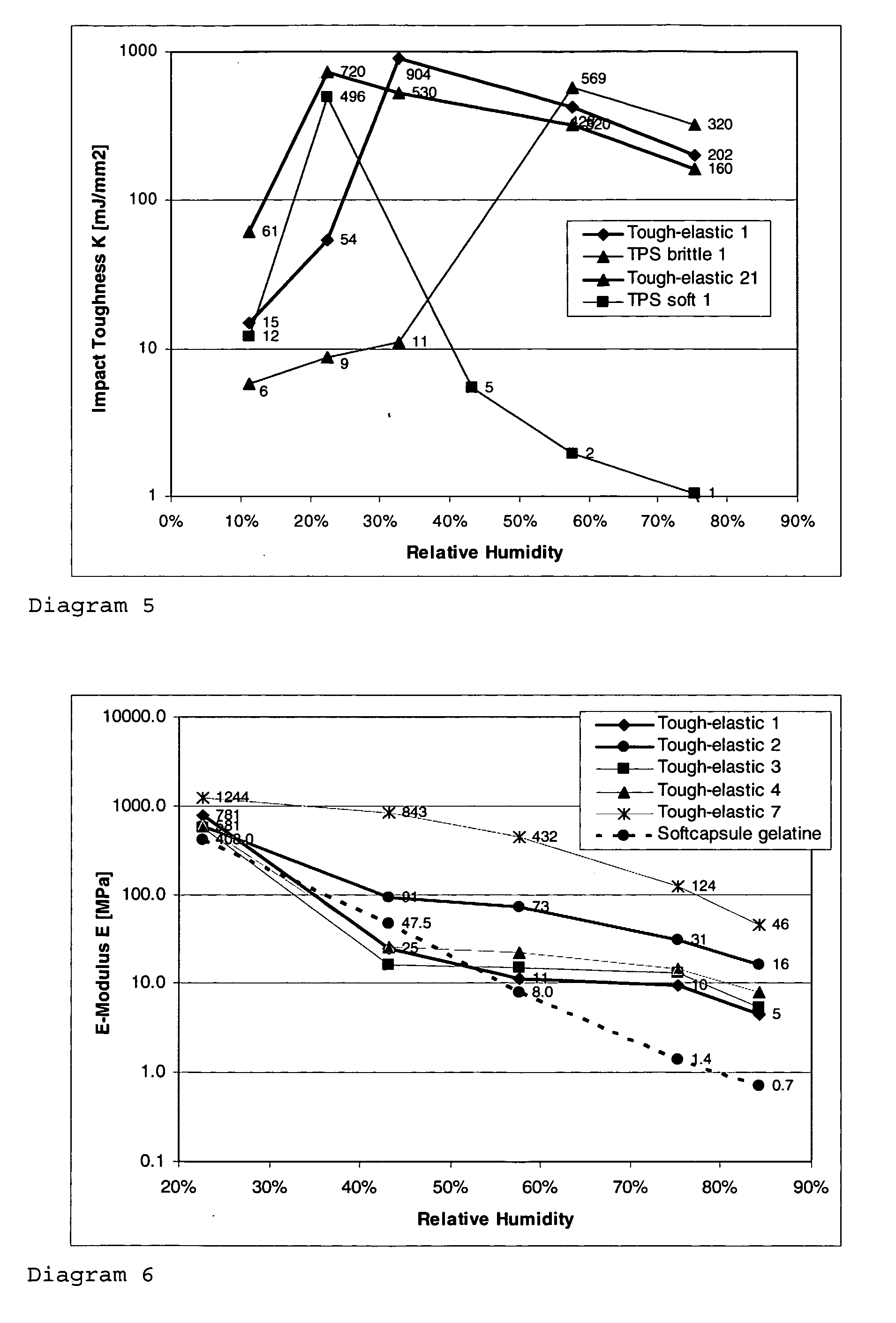Viscoelastic material
a technology of viscoelastic material and viscoelastic material, applied in the direction of capsule delivery, etc., can solve the problems of constant softening of amorphous phase with increasing humidity, loss of stability, and finally deliquesces, and achieves higher chain length, disadvantageous properties, and higher chain length
- Summary
- Abstract
- Description
- Claims
- Application Information
AI Technical Summary
Benefits of technology
Problems solved by technology
Method used
Image
Examples
example 1
[0158] The batch method was performed by means of a heatable Brabender kneader with a chamber volume of 50 cm3. In a first step the PS was plasticised by addition of water and softener at mass temperatures of 80-90° C. and 120 rpm 3 min. Parallel to this a solution of NS was prepared and added to the melt. Homogenising was carried out at 100 rpm for 10 min, whereby the mass temperature rose continuously to 90-105° C. The finished mixture was then removed and in shaped in a press into films of 0.5 mm, which contained typically around 20% water. The films were then stored at various RH to equilibrium and analysed with respect to their properties. Different formulations for tough-elastic materials and for reference materials are listed in Table 1.
[0159] Production of NS Solution:
TL1dT / dtTL2CNS type[° C.][° C. / min][° C.][%]SCA175255030Hydr. 1185508014LCA1190708512LCA2195909010
TL1: Solution temperature,
dT / dt: cooling rate of solution,
TL2: temperature of solution on addition to PS me...
example 2
[0160] Extrusion parameters: 30 mm twin-shaft extruder turning in same direction, tightly meshing (20L / D), screw configuration: inlet zone, distributive mixture (G3), dispersive mixture (G4), outlet zone (G5), speed 300 rpm, PS=7.1 kg / h (dose G1), NS solution=3.3 kg / h (25% NS, 75% water, dT / dt=50° C. / min, dose G2), softener=3.5 kg / h (dose G3), temperature housing G1=40° C., G2=80° C., G3=90° C., G4=90° C., G5=90° C. The final water content after extrusion could be varied by means of a vacuum in the range of 10-30%.
[0161] The mixture was formed by means of a wide-slot nozzle into a film of 0.6 mm in thickness and calibrated by means of a Chill Roll. The foil can then be rolled up and stored, processed further at a later time, or it can also be processed directly for example via a rotary die plant into soft capsules or via a welding and cutting plant into sachets. If the foil is interim stored then the water content should be below around 15% at a softener content of around 25-35% at...
example 3
[0162] As for Example 1, however NS solution dosed in G3, softener in G2.
PUM
| Property | Measurement | Unit |
|---|---|---|
| Fraction | aaaaa | aaaaa |
| Fraction | aaaaa | aaaaa |
| Fraction | aaaaa | aaaaa |
Abstract
Description
Claims
Application Information
 Login to View More
Login to View More - R&D
- Intellectual Property
- Life Sciences
- Materials
- Tech Scout
- Unparalleled Data Quality
- Higher Quality Content
- 60% Fewer Hallucinations
Browse by: Latest US Patents, China's latest patents, Technical Efficacy Thesaurus, Application Domain, Technology Topic, Popular Technical Reports.
© 2025 PatSnap. All rights reserved.Legal|Privacy policy|Modern Slavery Act Transparency Statement|Sitemap|About US| Contact US: help@patsnap.com



